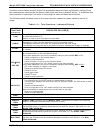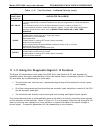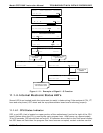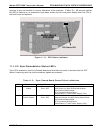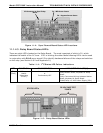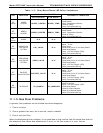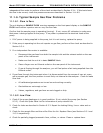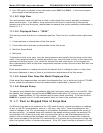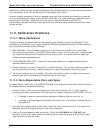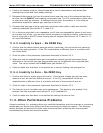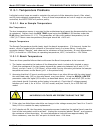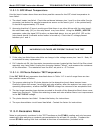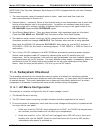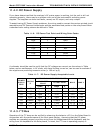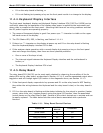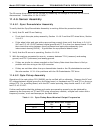
Model GFC7000E Instruction Manual TROUBLESHOOTING & REPAIR PROCEDURES
04584 Rev A1 195
ambient air, these natural, diurnal fluctuations might be detected by the instrument and cause its
in its calculation of the CO
2
concentration of the sample gas to drift.
Another possible symptom of poor or stopped purge gas flow would be the inability to measure
zero concentrations accurately at the end of a work day on a system that was calibrated at the
beginning of a workday. Again this could be due to local fluctuations in ambient CO
2
concentration between the time of the day when the calibration was performed and other times
during the day.
11.2. Calibration Problems
11.2.1. Miss-Calibrated
There are several symptoms that can be caused by the analyzer being miss-calibrated. This
condition is indicated by out of range Slopes and Offsets as displayed through the test functions
and is frequently caused by the following:
1. BAD SPAN GAS. This can cause a large error in the slope and a small error in the offset.
Delivered from the factory, the MGFC7000E’s slope is within ±15% of nominal. Bad span gas
will cause the analyzer to be calibrated to the wrong value. If in doubt have the span gas
checked by and independent lab.
2. CONTAMINATED ZERO GAS. Excess H
2
O can cause a positive or negative offset and will
indirectly affect the slope.
3. Dilution calibrator not set up correctly or is malfunctioning. This will also cause the slope, but
not the zero to be incorrect. Again the analyzer is being calibrated to the wrong value.
4. Too many analyzers on the manifold. This can cause either a slope or offset error because
ambient gas with its pollutants will dilute the zero or span gas.
11.2.2. Non-Repeatable Zero and Span
As stated earlier, leaks both in the MGFC7000E and in the external system are a common source
of unstable and non-repeatable readings.
1. Check for leaks in the pneumatic systems as described in Section 9.3.3. Don’t forget to
consider pneumatic components in the gas delivery system outside the MGFC7000E. Such as:
• A change in zero air source such as ambient air leaking into zero air line, or;
• A change in the span gas concentration due to zero air or ambient air leaking into the
span gas line.
2. Once the instrument passes a leak check, do a flow check (see Section 9.3.4) to make sure
adequate sample is being delivered to the sensor assembly.
3. A failing IR photo-detector may be at fault. Check the CO2 MEAS and CO2 REF test
functions via the front panel display to make sure the signal levels are in the normal range
(See Appendix A) and are quiet.



